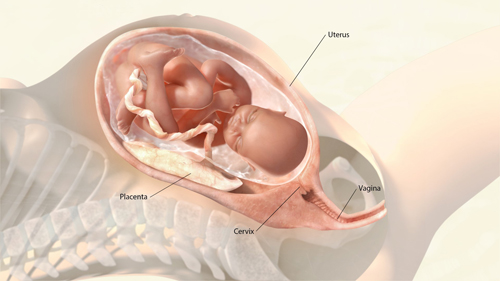Labor and delivery are the process by which a baby is born, from the body's preparations to when the baby and the placenta leave the womb.
The earliest stage of labor prepares the body for delivery. This is a period of hours or days when the uterus regularly contracts and the cervix gradually thins out (called "effacing") and opens (called "dilation") to allow the baby to pass through.

Once the cervix has opened completely, the woman can begin pushing to deliver the baby. When the baby and placenta come out through the vagina, it is known as a vaginal delivery.1

 BACK TO TOP
BACK TO TOP